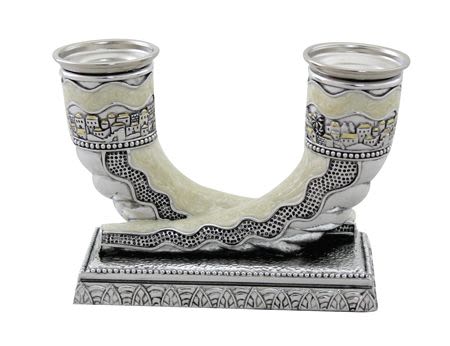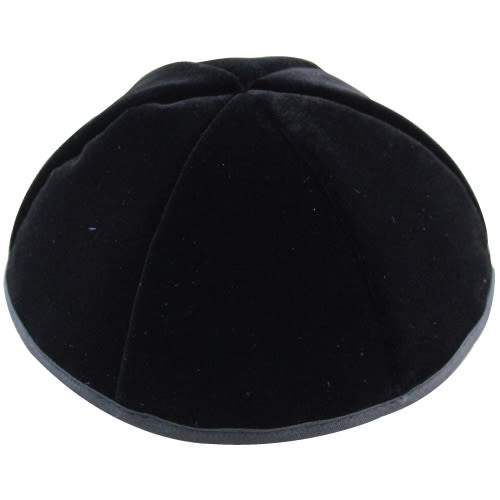
Pekudei: Always on His Mind
The High Priest’s task required constant awareness of his actions, without extraneous thoughts and calculations. He couldn't let his mind wander...

Translated and abridged by Rabbi Chanan Morrison
Parshat Pekudei
It is said that the brilliant Gaon of Rogachov (Rabbi Joseph Rosen, 1858-1936) would compose complex Halachic responsa while simultaneously conversing in totally different matters. When questioned how he  accomplished this feat, the Rogachover humbly replied that his talent was not at all remarkable. 'Why, have you never heard of a Jew saying his morning prayers while mentally planning out the day's business trip?'
accomplished this feat, the Rogachover humbly replied that his talent was not at all remarkable. 'Why, have you never heard of a Jew saying his morning prayers while mentally planning out the day's business trip?'
Constant Awareness of the Tzitz
One of the eight special garments worn by the High Priest was the tzitz. This was a gold plate worn across the forehead, engraved with the words, "Holy to God".
The Torah commands that the head-plate "will be on his forehead – always". (Ex. 28:38) The Sages understood this adjunction not so much as addressing where it is worn, but rather how it is worn. It is not enough for the tzitz to be physically on his forehead. It must be "always on his mind". The High Priest must be constantly aware of plate and its short but powerful message — "Holy to God" — while performing his sacred duties in the holy Temple. His service required conscious recognition of the purpose of his actions, without extraneous thoughts and calculations. He could not be like the Jew who thoughts revolved around business dealings while he mumbled his daily prayers.
Awareness When Wearing Tefilin
The golden head-plate resembles another religious object worn above the forehead: tefilin. In fact, the Sages compared the two. Like the tzitz, one wearing tefilin must always be aware of their presence: if the tzitz, upon which God's name is engraved just once, required constant awareness, certainly tefilin, in which God's name is mentioned many times, have the same requirement. (Shabbat 12a)
This reasoning, however, appears flawed. Do the Sages really mean that tefilin, worn by any Jew, are holier than the sacred head- plate worn only by the High Priest when serving in the holy Temple? Also, why is it that the head-plate only mentions God's Name once?
Connecting Life to Our Ultimate Goals
Life may be divided into two parts: ultimate goals, and the means we use to achieve those goals. We must be careful not to confuse one for the other. It is easy to loose sight of our true goals when we are intensively occupied with the ways of achieving them.
Even those who are careful to 'stay on track' may not have a clear understanding of the true purpose of life. The Sages taught that "all actions should be for the sake of Heaven". (Avot 2:12) Knowledge of what God wants us to do in each and every situation is by no means a simple matter. Our success in discovering the highest value, in comprehending the true meaning of existence, and being able to relate all of life's activities and circumstances to this central theme — is dependent upon our wisdom and spiritual insight.
Regarding the High Priest, we expect that the person suitable for such a central and elevated position will have reached the level of enlightenment whereby all activity revolves around one ultimate goal. For the High Priest, everything should relate to the central theme of "Holy to God". Therefore, the tzitz contained only one mention of God's name — one single, crowning value.
The common person, on the other hand, may not have reached such a high level of enlightenment. For him there exist many goals — Torah study, acts of kindness, charity, prayer, serving God, acquisition of wisdom, prophecy, etc. These are all true spiritual values; and by relating various activities to each of these values, we succeed in elevating ourselves and recognizing the underlying central goal. For this reason, tefilin contain God's name many times, reflecting the various spiritual goals that guide us.
We see how much people need physical reinforcement in order to keep the ultimate goals of life in sight. This is the underlying logic of the Talmudic comparison between the head-plate and tefilin. Even the High Priest, despite his broad spiritual insight, needed to be constantly aware of the tzitz on his forehead and its message. Certainly the average Jew, with a multitude of spiritual goals, needs to maintain contact and recognition of his tefilin.
(adapted from Ein Eyah vol. III, p. 26)
* * *
Rabbi Chanan Morrison of Mitzpeh Yericho runs http://ravkookTorah.org, a website dedicated to presenting the Torah commentary of Rabbi Avraham Yitzchak HaCohen Kook, first Chief Rabbi of Eretz Yisrael, to the English-speaking community. He is also the author of Gold from the Land of Israel (Urim Publications, 2006).












Tell us what you think!
Thank you for your comment!
It will be published after approval by the Editor.